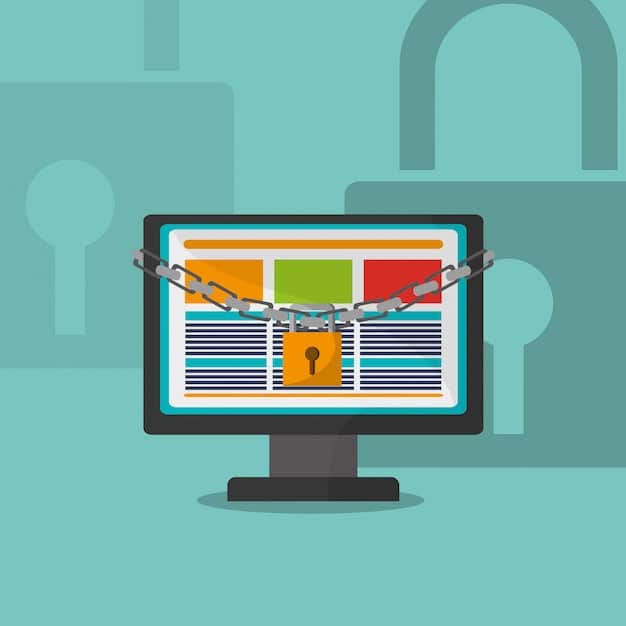E-commerce Payment Processing: A Must-Have Checklist

Avoiding common payment processing mistakes is crucial for US e-commerce businesses. A single mistake can lead to lost sales, chargebacks, and reputational damage.
A proactive approach to security and compliance ensures smooth transactions. This helps businesses maximize revenue and maintain customer trust.
Payment processing is vital for business success. Any slip-up in this process could harm a brand’s reputation and result in financial losses.
Understanding the US Payment Processing Landscape
Navigating the US payment processing landscape involves complexities. Businesses must consider factors like payment gateways and compliance regulations.
Understanding the landscape helps businesses avoid costly errors. It ensures that e-commerce transactions are secure and streamlined.
By grasping payment processing, businesses can optimize their systems. This knowledge helps ensure long-term success and financial security.
Choosing the Right Payment Gateway
Selecting the right payment gateway is crucial for security. A gateway acts as an intermediary between your website and payment processor.
Security, integration, and transaction fees are key considerations. Choose a gateway that encrypts data and integrates seamlessly with your platform.
Customer support is another important factor. Opt for a provider that offers reliable, responsive support for quick issue resolution.
The Importance of a Merchant Account
A merchant account allows businesses to process credit card payments. Without it, you cannot accept card payments directly from customers.
Different merchant accounts come with varying fees. Understanding these fees, such as transaction and monthly charges, helps prevent unexpected costs.
Ensure the merchant account is compatible with your payment gateway. Compatibility guarantees a smooth payment process without any disruptions.

Security Best Practices for E-commerce Transactions
Security is paramount in e-commerce. With cybercrime on the rise, businesses must implement strong measures to protect data.
SSL certificates encrypt data between the website and customers. This ensures sensitive information, like credit card numbers, is protected.
PCI DSS compliance is mandatory for businesses processing credit card payments. Following these standards protects cardholder data and avoids fines.
Implementing SSL Certificates
Secure Socket Layer (SSL) certificates are essential for encrypting data. They protect sensitive information like credit card details from interception.
SSL certificates are crucial for securing transactions. They ensure that customer data is encrypted during transmission.
All e-commerce websites must implement SSL certificates. This is a fundamental security measure for protecting online transactions.
PCI DSS Compliance
The Payment Card Industry Data Security Standard (PCI DSS) sets security standards. These standards protect cardholder data and ensure transaction security.
Compliance with PCI DSS is mandatory for all businesses handling credit card payments. Failing to comply can lead to penalties and fines.
PCI DSS includes installing firewalls and encrypting cardholder data. Regular anti-virus updates and restricting data access are also required.
Fraud Detection and Prevention Tools
Employing fraud detection and prevention tools is crucial for identifying and preventing fraudulent transactions.
These tools use a variety of techniques, such as address verification, card verification values (CVV), and IP address analysis, to detect suspicious activities. Implementing these measures can significantly reduce the risk of fraud and chargebacks.
Best strategies for fraud detection:
- Address Verification System (AVS): Compares the billing address provided by the customer with the address on file with the card issuer.
- Card Verification Value (CVV): Requires customers to enter the three- or four-digit CVV code printed on the back of their credit card.
- IP Address Analysis: Identifies suspicious IP addresses associated with fraudulent activities.
Navigating Chargebacks and Disputes
Chargebacks occur when a customer disputes a transaction. Common causes include fraud, product dissatisfaction, and billing errors.
To prevent chargebacks, provide clear product descriptions. Prompt shipping and responsive customer service can also help.
When chargebacks occur, gather relevant documentation to support your case. A well-documented response can lead to a favorable outcome.
Understanding the Reasons for Chargebacks
Chargebacks occur when a customer disputes a transaction with their credit card issuer, resulting in a reversal of the payment. Common reasons for chargebacks include:
- Fraudulent Transactions: Unauthorized use of a customer’s credit card.
- Product Dissatisfaction: Customer is unhappy with the product or service received.
- Billing Errors: Incorrect billing amounts or duplicate charges.
- Failure to Deliver: Product not received by the customer.
Best Practices for Preventing Chargebacks
Preventing chargebacks is always better than dealing with them later. Implementing these best practices can significantly reduce the chargeback rate.
Provide accurate, detailed product descriptions to minimize dissatisfaction. Shipping orders promptly and offering tracking information are key steps.
Respond promptly and professionally to customer inquiries. Excellent customer service can help prevent disputes before they escalate into chargebacks.

Resolving Disputes Effectively
When a chargeback occurs, respond quickly with relevant documentation. Gather order confirmations, shipping records, and customer communication to support your case.
Present your evidence clearly to the credit card issuer. A well-documented response often leads to a favorable resolution.
Managing chargebacks requires proactive measures. A commitment to excellent customer service ensures the best possible outcome.
Mobile Payment Optimization
With smartphones and tablets, mobile payments are now integral to e-commerce. Optimizing payment systems for mobile devices captures more market share.
A responsive website design ensures that your site works well across devices. A mobile-friendly site increases customer satisfaction and conversion rates.
Integrating mobile payment methods like Apple Pay and Google Pay enhances customer convenience. Offering multiple options improves flexibility at checkout.
Responsive Website Design
Responsive design adapts your site for various screen sizes. This ensures a smooth shopping experience on smartphones, increasing conversion rates.
Make it easy for customers to browse, add to cart, and complete purchases. A seamless mobile experience keeps customers engaged and satisfied.
Optimizing for mobile includes large, easy-to-tap buttons. Simplified navigation and quick checkout processes enhance customer experience.
Integrating Mobile Payment Options
Offering a variety of mobile payment options can enhance the convenience and appeal of your e-commerce store. Popular mobile payment methods include:
- Apple Pay: Allows customers to make purchases using their Apple devices and stored credit card information.
- Google Pay: Enables customers to pay using their Google accounts and stored payment methods.
- Samsung Pay: Provides a secure and convenient way for Samsung device users to make purchases.
Subscription and Recurring Billing Management
Managing subscriptions is essential for businesses offering recurring payments. Set up clear and consistent billing cycles to avoid confusion.
Notify customers about upcoming payments in advance. Clear billing cycles reduce disputes and help customers manage their subscriptions effectively.
Handling payment failures efficiently is crucial. Automated retry attempts and grace periods reduce churn and maintain customer relationships.
Setting Up Billing Cycles
Establish consistent billing cycles for subscription-based services. This ensures customers are aware of their payment schedules.
Provide clear notifications before each billing cycle. This transparency helps reduce disputes and build trust with customers.
A defined billing frequency (monthly, quarterly, or annually) helps customers track payments. It also allows businesses to forecast revenue.
Handling Payment Failures
Payment failures are common in subscription models. Implementing strategies like automated retry attempts can help reduce missed payments.
Notify customers of payment issues and provide instructions for updating their information. A grace period ensures customers have time to rectify payment failures.
Offering multiple payment options and retrying after a few days improves payment success. It also helps to minimize customer frustration.
Managing Customer Subscriptions
Allowing customers to manage their subscriptions enhances their experience. Enable them to easily update payment details, switch plans, or cancel subscriptions.
A user-friendly subscription management system increases customer satisfaction. This, in turn, improves retention and loyalty.
Streamlining the process for customers to modify their subscriptions helps build trust. This also encourages long-term customer relationships.
Staying Updated with Payment Processing Regulations
Payment processing regulations evolve regularly. Keeping up with changes is essential for compliance and avoiding penalties.
Subscribing to industry newsletters ensures businesses stay informed. Attending events and webinars is another effective way to stay current.
Consult with legal experts and review policies periodically. This ensures your business remains compliant with the latest regulations.
| Key Point | Brief Description |
|---|---|
| 🛡️ Security Measures | Implement SSL, PCI DSS, and fraud prevention tools to protect customer data. |
| 💸 Chargeback Prevention | Use clear descriptions, prompt shipping, and excellent service to minimize chargebacks. |
| 📱 Mobile Optimization | Ensure a responsive design and offer mobile payment options like Apple Pay and Google Pay. |
| 🔄 Recurring Billing | Establish clear billing cycles and handle failures efficiently to reduce churn. |
Frequently Asked Questions (FAQs)
▼
A payment gateway is a technology that facilitates online transactions by transferring payment information between a payment portal (like a website) and the front end processor or bank. It’s essential for secure online payment processing.
▼
PCI DSS (Payment Card Industry Data Security Standard) compliance is critical because it ensures that businesses securely handle credit card information, reducing the risk of data breaches and financial losses.
▼
Common causes of chargebacks include fraudulent transactions, customer dissatisfaction with the product or service, billing errors, and failure to deliver the product. Addressing these can significantly reduce chargebacks.
▼
Mobile optimization includes having a responsive website design, integrating mobile payment options like Apple Pay, and ensuring a streamlined and easy checkout process for mobile users to enhance conversion.
▼
When a payment fails, implement automated retry attempts, notify the customer about the failure, and offer a grace period for them to update their payment information to avoid subscription cancellation.
By addressing these common payment processing mistakes, US e-commerce businesses can create a secure, efficient, and customer-friendly environment for online transactions, leading to increased revenue and lasting customer loyalty.





